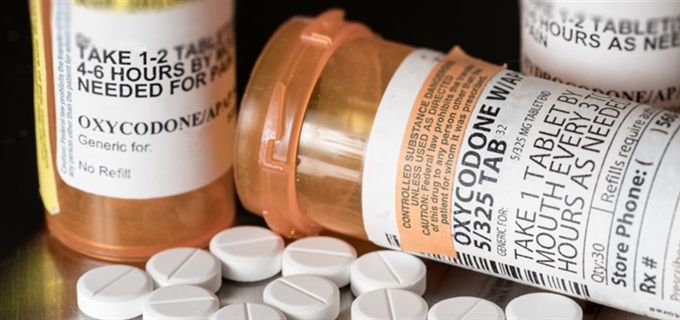Get News & Updates Directly To Your Inbox


Get News & Updates Directly To Your Inbox

Find A Doctor Or Hospital In Your Network.
Opioids are a class of drugs that include illegal drugs like heroin and fentanyl. Legal prescription pain relievers such as oxycodone (OxyContin) and hydrocodone (Vicodin) are part of the class, too. The Centers for Disease Control and Prevention (CDC) reveals that more than 80 percent of the 80,411 drug overdose deaths in 2021 involved an opioid.
Opioid deaths continue to rise — seeing a dramatic rise from 2019 to 2021.
One of the challenges in dealing with pain is that it is subjective. Physicians must rely on our description about its intensity, which can make it hard to judge how much medication a person needs.
Chronic pain is difficult to treat. To begin with, what exactly is chronic pain? A typical definition is pain that lasts more than 12 weeks. The side effects of chronic pain can be severe. Limited mobility and a poorer quality of life are two.
If you’re experiencing chronic pain, or if your pain medications aren’t working, meet with your doctor. Here are some questions you might ask to start the discussion:
Acupuncture, hypnosis, massage, spinal manipulation and yoga may help relieve your pain. The National Institutes of Health (NIH) reports, “a growing body of evidence suggests that some complementary approaches may help to manage some painful conditions.”
Talk with your doctor. Many hospitals offer a variety of alternative treatments.
No matter how you and your doctor decide to treat your pain, here’s the important thing to remember: Your pain needs to be controlled in a safe and effective way. By using safety as the starting point, you’ll be able to plan ways to lessen or eliminate your pain.
 Centers for Disease Control and Prevention, 2023; Opioids,
Centers for Disease Control and Prevention, 2023; Opioids,  National Institute on Drug Abuse, 2022; Chronic Pain: In Depth,
National Institute on Drug Abuse, 2022; Chronic Pain: In Depth,  National Institutes of Health, National Center for Complementary and Integrative Health, 2023
National Institutes of Health, National Center for Complementary and Integrative Health, 2023Originally published 5/17/2017; Revised 2017, 2021, 2023
Blue Cross and Blue Shield of Texas, a Division of Health Care Service Corporation,
a Mutual Legal Reserve Company, an Independent Licensee of the Blue Cross and Blue Shield Association
© Copyright 2025 Health Care Service Corporation. All Rights Reserved.
Telligent is an operating division of Verint Americas, Inc., an independent company that provides and hosts an online community platform for blogging and access to social media for Blue Cross and Blue Shield of Texas.
![]() File is in portable document format (PDF). To view this file, you may need to install a PDF reader program. Most PDF readers are a free download. One option is Adobe® Reader® which has a built-in screen reader. Other Adobe accessibility tools and information can be downloaded at https://access.adobe.com.
File is in portable document format (PDF). To view this file, you may need to install a PDF reader program. Most PDF readers are a free download. One option is Adobe® Reader® which has a built-in screen reader. Other Adobe accessibility tools and information can be downloaded at https://access.adobe.com.
![]() You are leaving this website/app ("site"). This new site may be offered by a vendor or an independent third party. The site may also contain non-Medicare related information. Some sites may require you to agree to their terms of use and privacy policy.
You are leaving this website/app ("site"). This new site may be offered by a vendor or an independent third party. The site may also contain non-Medicare related information. Some sites may require you to agree to their terms of use and privacy policy.
Powered by Telligent